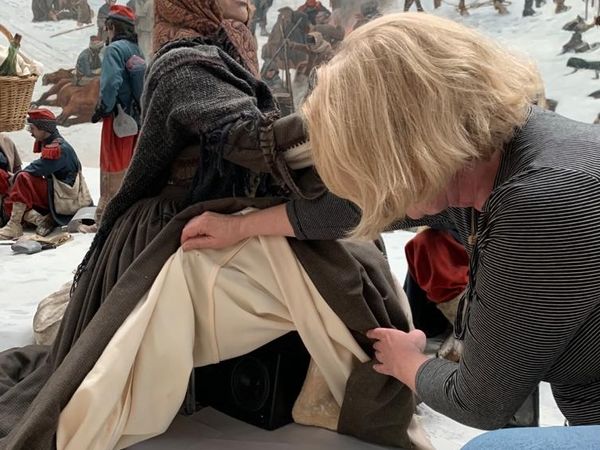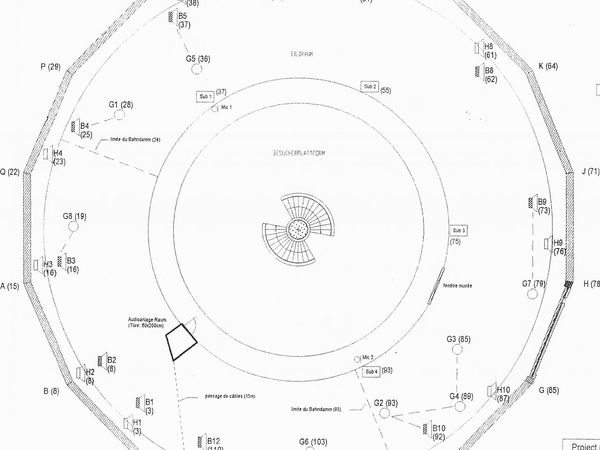Bringing history to life
The diverse soundscape was created as part of the comprehensive restoration of the panorama and building between 1996 and 2000. In keeping with the 1990s preference for detailed reenactments and dramatizations of historical events, it was intended to acoustically enliven the silent panorama and snow-covered atmosphere. “History brought to life” was the slogan.
In the loop
The sound for the panoramic image is provided by a total of 37 loudspeakers. Twelve of these are arranged in a circle at the bottom and top edges of the screen. In a 10-minute loop, they play sounds appropriate to the events taking place in the panoramic scene, thus creating the basic soundscape: the clanging of weapons being fired, boots trudging through the snow, human coughing, the rattling and whistling of the train, and the songs of the Swiss Army.
Location-specific
Eight additional boxes are invisibly integrated into the scenography of the faux terrain. They emphasize the individual actions. They are the source of the soldiers' discussions around the fire, the crying of the fugitives, and the journalist's sketching. At the outer edge of the faux terrain, there are four additional boxes for special acoustic effects. Manually controlled, an audio play can be heard in the middle of the room via the central intercom system, selectable in four languages.
Incidentally, in addition to the soundscape, the use of scents was also considered at the time of restoration. Did anything remain of this? Take a sniff!






